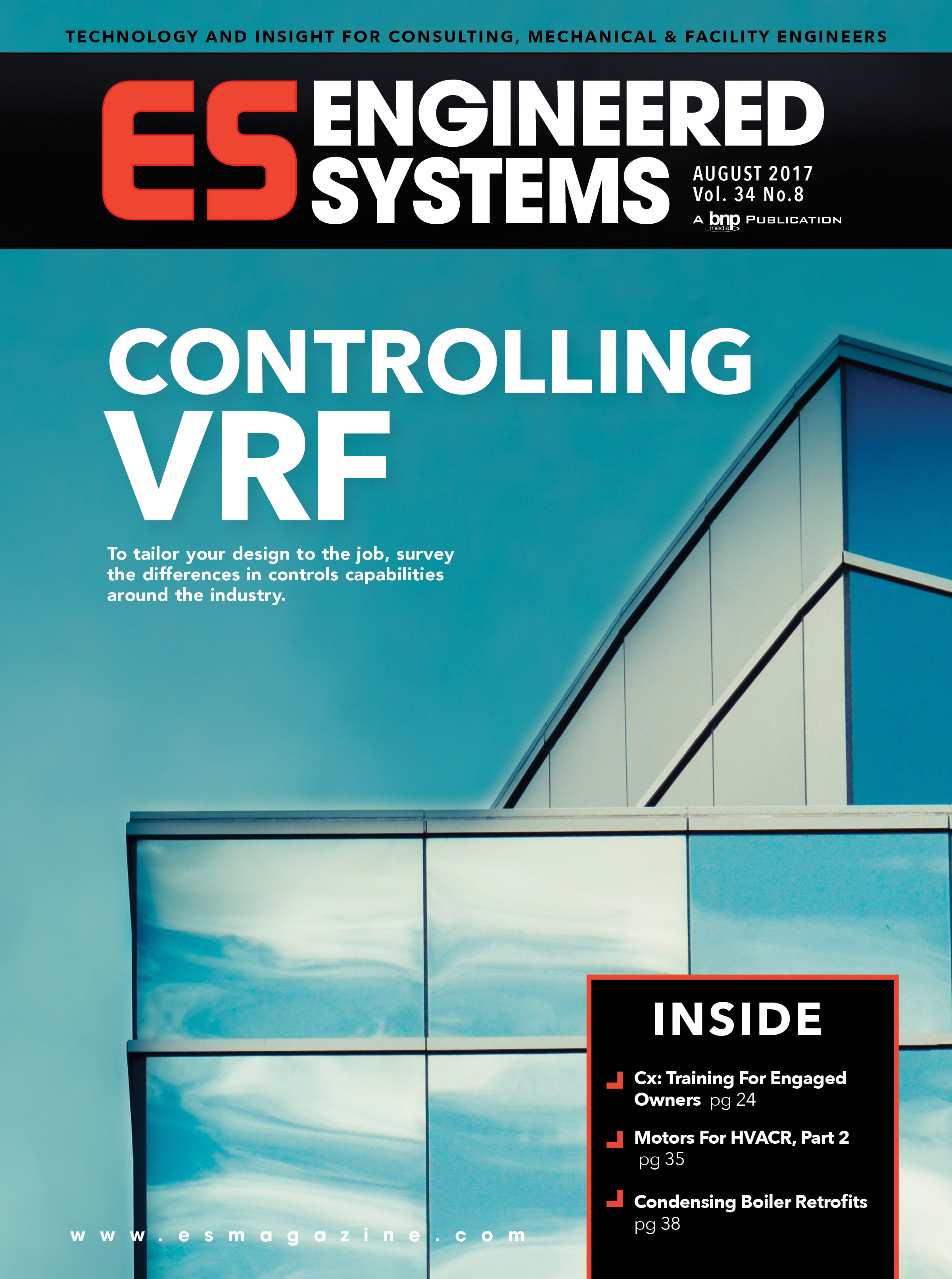read for at least one voter.
As you may know, I’m an avid reader of Engineered Systems magazine, and while I was reading the April issue from cover to cover, I came across this advertisement stating in bold letters, “Attention ASHRAE Members – Vote No” which caught my attention. Within the advertisement was a comment that an ASHRAE member fulfilling his annual voting obligation by answering “yes” to the five-point questionnaire may well subvert the intent of the 1999 membership petition on ventilation standards submitted by hundreds of concerned ASHRAE members at that time.
Before I go on, let me qualify my comments below by noting that I started out in the HVAC business back in June 1965, and over the years, I have worked my way through design engineering over to construction and D-B to O&M, to where I now focus my attention on being an owner representative, building-systems troubleshooter, and commissioning engineer. I’ve been an ASHRAE member since 1976 and before that, was an associate member. This year, I was honored to become an ASHRAE Fellow, as well as recipient of the George B. Hightower Technical Achievement award.
I’ve invested a lot of time with ASHRAE over the years, but I consider myself to be a practitioner and not a researcher (not that there is anything wrong with that). I don’t try to impress people with a broad use of the English language, and I attribute much of my success to keeping it simple. So when I read the five questions, I must say I struggled with what was being asked, so I thought I’d share with you my assessment.
- “Should ASHRAE Standards and Guidelines contain health-based limits for pollutant concentrations….” My reaction is, “I don’t think so.” My ASHRAE shouldn’t be so specific in areas that I don’t know very much about. I’d leave that to those who understand health-based information. I understand fan curves, pump curves, energy budgets, etc.
- “Should ASHRAE Standards and Guidelines be allowed to specify means and methods for limiting the concentrations of pollutants normally considered in the design of HVAC systems, even for pollutants that may not have maximum permissible concentration levels set by a recognized health authority or for which standard measurement methods don’t exist?” My reaction to this is “Heck, no.” Most engineering construction documents I come across are designed on the conservation side (see last month’s column), and now we want to consider specifying means and methods for pollutants for which standard measurement methods don’t exist? I don’t think I have enough liability insurance to embrace this approach.
- I couldn’t vote yes or no to the third question, because I believe I would need a lawyer to explain it to me. I’m just a practitioner, and I just couldn’t get my arms around what was being asked initially. And then there was that part of the question that references Standard 111, which I couldn’t find in my engineering library, and the open-ended “covered by other consensus methods of test.” That last part reminded me of when an engineer puts a note on the drawing stating “by others.” I have never come across the Others Brothers at any HVAC gathering, and somehow this “other consensus” may be that other outfit under a new catchall name.
- Question 4 asked if our standards and guideline should strive to provide health, comfort, and/or occupancy acceptability. I’m all for comfort, but I’ll leave the “providing health” to my doctor, which reminds me, I need to have my annual checkup.
- I consider the final question to be a two-part issue. Being from New England, we haven’t been able to solve the stratification-freezestat tripping problem yet, so I don’t think we are ready to tackle “mixing efficiencies.” The problem I have with second part of this question is the words, “the consensus of the standards writing body.” That sounds like the Others Brothers again taking care of anything that we think will cover us should someone challenge our design.
Although I’ve had some fun with these five questions of importance, I can’t help but think that when issues like these need to be voted on by the entire ASHRAE membership, someone could have written them in terms that a practitioner like me could understand. This is all clear as mud to me, and yet I think we may be overstepping our HVAC boundaries by taking on health care, pollution concentrations, measurement methods that don’t exist, and mixing efficiencies for installations that aren’t built in a testing lab. If I need a doctor or hygienist for my project, I’ll hire that expert and not go about referencing their manuals and standards. Maybe it’s just me, but let’s keep the line of responsibility crystal clear and not clear as mud.
(Footnote: An electronic discussion board has been established on www.ashrae.org to allow ASHRAE membership an open dialogue on the five questions placed on the ballot by the Board of Directors.)ES
For more online publications, visitwww.buildingsmartsoftware.com.

